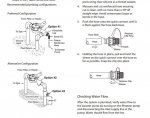At pool pump pressures, as long as it's not heated water, dwv probably won't fail. It's a foam core with pvc on each side vs being solid pvc. It just makes whoever used it look like a complete idiot. I'm picky enough I would replace it. With the other fitting, you need to cut the line so you can unscrew the fitting going into the pump. Go to Lowes and get replacement fittings, and a little piece of pipe, and built another piece just like it. Use Teflon tape or pipe dope to put it back together. It would be best to use a union instead of just a coupling to tie it all back together so you can break the line without actually having to break the line next time. If you've never worked with pvc before, get a couple extra cheap fittings so you can practice and see how it all works. You'll also need a hack saw or pvc cutter, primer, and pvc cement. You should be able to get everything you need for probably $30.
Sent from my iPhone using Tapatalk





